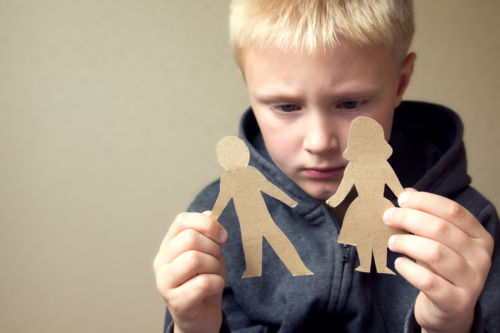Child Custody in the Wake of Domestic Violence
The story has been front page news for several weeks: Angelina Jolie and Brad Pitt are getting a divorce. While most of us do not personally know one of Hollywood’s elite power couples, we are mesmerized by the story of the “perfect family” seemingly erupting in a sea of lies, deceit, and abuse. It surely makes for great journalism; however, it also opens the door to begin the discussion of uncomfortable real life issues that occur in more households than we would like to believe. The timing to discuss the issues could not be more appropriate, as October is, among other things, Domestic Violence Awareness Month. Therefore, in the spirit of this month’s focus, we are opening the discussion regarding Minnesota’s laws regarding child custody in the wake of domestic violence and substance abuse.
The Basics
We have discussed the basics of child custody in Minnesota in the past. However, as a quick refresher, custody is divided into two types of categories, joint and sole. This is further broken into joint or sole physical custody and joint or sole legal custody. In many cases, parents will agree to joint legal custody, in which decisions regarding the children are decided by both parents together in a co-parenting type of environment, and sole physical custody, wherein the children primarily live with one parent for purposes of school and some form of unity. However, many parents are learning how to work with a joint physical custody agreement as well. With the sole physical custody agreements, typical visitation time such as one day during the week and every other weekend (or some variation thereof) is provided to the non-custodial parent to allow for adequate parenting time. Most of the time, the non-custodial parent does not need outside supervision and has little to no restrictions regarding activities. However, these cases are not the norm when domestic violence or substance abuse are involved.
The Alternative
When domestic violence and/or substance abuse is involved in divorce and custody cases, the rules of the game change quite drastically. Domestic abuse is defined under Minnesota Statutes, Chapter 518B. When domestic abuse is involved, the best interests of the children and the abuser’s victim must be considered.. The concern is not to make sure the children see their parents in a fair and equal manner. Instead, it is to ensure the children remain safe at all times and the abuse victim, who in many cases is the sole provider for the children, is not placed in harm’s way. Therefore, a judge may see fit to grant parenting time only with court or otherwise approved supervision. This means the non-custodial parent cannot have time alone with the children under any circumstances. If a person outside of the court cannot be agreed upon to provide supervision, the court will likely provide it to the parents through a room at the municipal building or the Department of Human Services, such as the Child Protection offices.
Legal Options
In Family law cases, you can obtain an Order for Protection (OFP) to provide you protection from the abuser. The OFP is issued after the Judge, using the preponderance of the evidence standard, determines that 1) the respondent committed domestic abuse against the petitioner, and 2) that there is a family or household relationship between the petitioner and the respondent.
If you are the victim of domestic abuse or are involved in a divorce in which substance abuse and domestic violence are issues, first, it is important to know there is help. Minnesota offers numerous services and agencies to help you and your children get to safety. Once you are safe, contact the Divorce and Family law attorneys at Lake Harriett Law Office, LLC at (612) 750-4843 to schedule a consultation. We can help you through the legal battle ahead.

